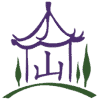This article is the third in a 3-part series about Traditional Chinese Medicine
Greetings again! In the previous article in this series we discussed the ancient Chinese wisdom of Yin and Yang and how it applies to the practice of Chinese herbalism. In this last article in the series, we will reflect upon the very heart of Chinese Medicine. Qigong is a term that describes any system of meditative movements, breathing exercise, or visualizations that increase vitality and harmonizes the body, mind, and spirit with nature and the seasons.
The seasons have changed; nature prepares for the next phase of its cycle. As an integral part of that system, we too need to prepare. Living in harmony with nature is the core of Chinese medicine and Qigong is the most widely used, time tested practice with which to do it. We can learn a lot from observing the ebb and flow of the natural order, ultimately seeing within it the seasons of our own life. The cosmology of the Earth is such that all living beings are sustained by and share Qi, much in the same way that we all breathe the same air. But where does this Energy come from and how can we support it?
We are all born with a fixed amount of vital energy. This is your genetics, your constitution, your energetic inheritance from your parents. It is not unlike a savings account that is created the moment of your birth; when all the energy therein is spent, your life on Earth comes to a close. Everything else you do after birth-the energy you generate from digesting food, the energy you reclaim from quality sleep and rest, and the energy you expend going about your daily activities-is likewise analogous to a checking account from which you make regular deposits and withdrawals. Living a balanced life would ideally replace just as much energy as is used in a given day, your life’s savings remains untouched, and you live vitally and age gracefully. Burning the candle at both ends, however, puts one in energetic debt and the body is forced to draw from its savings account. Over time, this compensation and subsequent drain to the body’s core energy allows illness a foothold as one’s constitution weakens. To a lesser extent, this occurs naturally to us all as aging; however, the ancient Chinese discovered and systematized Qigong exercises to draw energy into the body and dramatically slow this process.
Qigong literally translates as “energy cultivation” and the benefits for those who practice it are many. With time and consistent effort, the student of Qigong will become skilled at attracting ever increasing amounts of Qi into the body, allowing it to circulate and naturally heal all facets of the individual. There are many kinds of Qigong forms and similarly, dispositions among those who teach it. The most important thing is to find a teacher who you feel comfortable with and a practice that makes you feel relaxed yet strong as what works for one person may not necessarily work for another. For some it may be as simple as taking five or ten minutes out of their daily routine to relax with some deep belly breathing. For others, flowing and rhythmic series of movements are most beneficial. It is also important to be open to the fact that what works for you one day, month, or year can suddenly change as you feel drawn to a different style of practice. Listen to your body’s wisdom and change peacefully just as nature changes with the seasons. The art form of Qigong as the heart of Chinese medicine is all about being flexible in the pursuit to be balanced, preventing disease before it ever has a chance to root itself.
Whether you have been inspired to try acupuncture, Chinese herbs, or practice Qigong from this series, it is most important to recognize that Chinese medicine as a philosophy is always available to offer further insights into wellness. Health is not merely the absence of disease, but a state in which you live vibrantly, peacefully, and consciously. Blessings on that journey.

Leave a Reply